Light, Cancer and Fritz-Albert Popp Townsend Letter,
August-Sept, 2010 by Jule Klotter
What makes some
substances carcinogenic and others benign, even though
they are
chemically similar? In 1970, Fritz-Albert Popp, a
German theoretical biophysicist, discovered that
benzo[a]pyrene,
a potent carcinogen, absorbs ultraviolet light at
one wavelength and emits it at another. Yet, benzo[e]pyrene,
a benign compound that is nearly identical to benzo[a]pyrene,
absorbs and reemits the same light at its original
wavelength. Popp tested 37 different chemicals. The
carcinogens "scrambled" light with a wavelength
of 380 nanometers. The benign chemicals did not. That
finding in itself is fascinating. Using ultraviolet
light, the EPA could target which of the thousands
of chemicals used by industry are most likely to be
carcinogenic. However, Popp's work with light and carcinogens
led to momentous findings about cancer and about light's
role in biology, as Lynn McTaggart explains in her
book The Field. During his work with chemicals, Popp
learned that 380 nanometers, the wavelength altered
by carcinogens, is also the wavelength that cells prefer
to use to repair themselves.
After exposure to intense
UV light, cells quickly self-repair when they are
exposed to very weak UV light, particularly that
with a wavelength
of 380 nanometers. Popp hypothesized that cancer
results from a disruption of cells' photorepair system.
His
hypothesis raised a question: what in the body produced
this very weak light that powered the repair system?
Popp and his student Bernard Ruth found that all
living systems store light energy (photons) acquired
from
the sun and from plants consumed as food (photosynthesis),
in DNA. This stored light is released as very weak,
extremely coherent biophotons. "Photons switch
on the body's processes like a conductor launching
each individual instrument into the collective sound," explains
McTaggart. "At different frequencies they perform
different functions." Over the years, Popp found
that biophoton emissions from healthy humans display
rhythmic patterns. He also observed that the coherence
of the emissions, the intensity, and the rhythmic
patterns varied in people with different illnesses.
People with
multiple sclerosis, for example, absorb too much
light and their photon emissions display too much
order.
Biophoton emissions from cancer patients lack coherence
and fail to follow natural rhythmic patterns. Also,
tumors emit high amounts of photons: an average
of 300 [ or -] 90 photons/cm per minute compared
with
normal tissue that emits an average of 22 [ or
-] 6 photons/cm per minute. Popp and colleagues at
the
International
Institute of Biophysics have discovered that surface
tumors and tumors excised during surgery respond
to remedies with changes in photon emissions. Most
possible
treatments have no effect on the tumor's high emission
rate. However, when the tumor responds to a nontoxic
remedy with decreased emissions, the agent will
likely improve the patient's condition and may even
promote
a cure. Rather than
killing tumor cells, the beneficial agent appears
to stimulate the normal cells to overcome the cancerous
ones." |
It was 1970, and Popp, a theoretical biophysicist at
the University of Marburg in Germany, had been teaching
radiology -- the interaction of electromagnetic (EM)
radiation on biological systems. Popp was too early to
worry about things like cellphones and microwave towers
which are now commonly linked with cancers and leukemia.
His world was much smaller.
Dr. Fritz-Albert
Popp
Dr. Popp is a German physicist, who holds a degree in experimental
physics from the University of Wurzburg, a PhD in theoretical
physics at the University of Mainz and a Professorship at Marburg
University. He has conducted research that confirms the existence
of biophotons.
Nominated for a Nobel Prize for
his discovery that is used in the application of
all EMR's products.
He identified and measured electrical impulses
that create an electromagnetic network, which controls
every organ and its function in your body. He named
these electrical impulses Biophotons. |
 |
He'd been examining two almost identical molecules:
benzo[a]pyrene, a polycyclic hydrocarbon known to be
one of the most lethal carcinogens to humans, and its
twin (save for a tiny alteration in its molecular makeup),
benzo[e]pyrene. He had illuminated both molecules with
ultraviolet (UV) light in an attempt to find exactly
what made these two almost identical molecules so different.

Why Ultra-violet light?
Popp chose to work specifically with UV light because
of the experiments of a Russian biologist named Alexander
Gurwitsch who, while working with onions in 1923, discovered
that roots could stimulate a neighboring plant's roots
if the two adjacent plants were in quartz glass pots
but not if they were in silicon glass pots. The only
difference being that the silicon filtered UV wavelengths
of light while the quartz did not. Gurwitsch theorized
that onion roots could communicate with each other by
ultraviolet light.
What Popp discovered was that benzo[a]pyrene (the cancer
producing molecule) absorbed the UV light, then re-emitted
it at a completely different frequency -- it was a light "scrambler".
The benzo[e]pyrene (harmless to humans), allowed the
UV light to pass through it unaltered.
Popp was puzzled by this difference, and continued to
experiment with UV light and other compounds. He performed
his test on 37 different chemicals, some cancer-causing,
some not. After a while, he was able to predict which
substances could cause cancer. In every instance, the
compounds that were carcinogenic took the UV light, absorbed
it and changed or scrambled the frequency.
There was another odd property of these compounds: each
of the carcinogens reacted only to light at a specific
frequency -- 380 nm (nanometres) in the ultra-violet
range. Popp kept wondering why a
cancer-causing substance would be a light scrambler.
He began reading the scientific literature specifically
about human biological reactions, and came across
information about a phenomenon called 'photorepair'.

Photorepair
It is well known from biological laboratory experiments
that if you blast a cell with UV light so that 99 per
cent of the cell, including its DNA, is destroyed, you
can almost entirely repair the damage in a single day
just by illuminating the cell with the same wavelength
at a much weaker intensity. To this day, scientists don't
understand this phenomenon, called photorepair, but no
one has disputed it.
What's
so special about 380-nanometer frequency? It is where
the best "photorepair"
effects take place — a phenomenon described as such:
Popp also knew that
patients with xeroderma pigmentosum [right] eventually
die of skin cancer because their photorepair system
can't repair solar damage. He was also struck by
the fact that photorepair works most efficiently
at 380 nm -- the same frequency that the cancer-causing
compounds react to and scramble.This was where
Popp made his logical leap. If the carcinogens
only react to this frequency, it must somehow be
linked to photorepair. If so, this would mean that
there must be some kind of light in the body responsible
for photorepair. A compound must cause cancer because
it permanently blocks this light and scrambles
it, so photorepair can't work anymore. It seemed
logical, but was it true? |
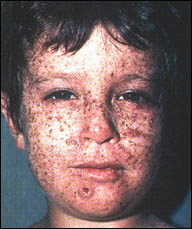 |

Light inside the body
Popp wrote about it in a paper and a prestigious medical
journal agreed to publish it.
Not long after that, Popp was approached by a student
named Bernhard Ruth, who asked Popp to supervise his
work for his doctoral dissertation. Popp told Ruth he
was prepared to do so if the student could show that
light was emanating from the human body.
This meeting was fortuitous for Popp because Ruth happened
to be an excellent experimental physicist. Ruth thought
the idea was ridiculous, and immediately set to work
building equipment to prove Popp's hypothesis wrong.
Within two years, Ruth had constructed a machine resembling
a big X-ray detector which used a photomultiplier to
count light, photon by photon. Even today, it is still
one of the best pieces of equipment in the field. The
machine had to be highly sensitive because it had to
measure what Popp assumed would be extremely weak emissions.
In an old documentary film taken in the laboratory
at the International Institute of Biophysics,
Dr. Popp opens a chamber about the size of a
bread box. He places a fresh cutting from a plant
and a wooden match in a plastic container inside
the dark chamber and closed the light proof door.

Immediately he switches on the photomultiplyer
and the image shows up on a computer screen.
The match stick is black while the green, glowing
silhouette of the leaves is clearly visible.
Dr. Popp exclaims, "We now know, today, that man is essentially
a being of light." |
In 1976, they were ready for their first test with cucumber
seedlings. The photomultiplier showed that photons, or
light waves, of a surprisingly high intensity were being
emitted from the seedlings. In case the light had to
do with an effect of photosynthesis, they decided that
their next test -- with potatoes -- would be to grow
the seedling plants in the dark. This time, when the
seedlings were placed in the photomultiplier, they registered
an even higher intensity of light. What's more, the photons
in the living systems they'd examined were more coherent
than anything they'd ever seen.
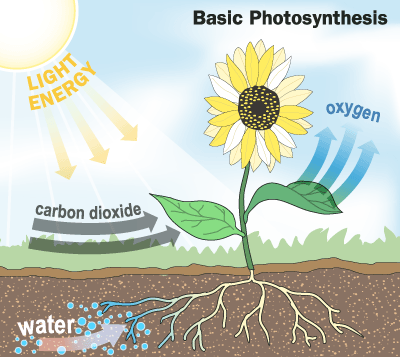
Popp began thinking about light in nature. Light was
present in plants and was used during photosynthesis.
When we eat plant foods, he thought, it must be that
we take up the photons and store them.
When we consume broccoli, for example, and digest it,
it is metabolised into carbon dioxide (CO2) and water,
plus the light stored from the sun and photosynthesis.
We extract the CO2 and eliminate the water, but the light,
an EM wave, must be stored. When taken in by the body,
the energy of these photons dissipates and becomes distributed
over the entire spectrum of EM frequencies, from the
lowest to the highest.
This energy is the driving force for all the molecules
in our body. Before any chemical reaction can occur,
at least one electron must be activated by a photon with
a certain wavelength and enough energy.
The biochemist and Nobel Prize winner Lehninger mentions
in his textbook that some reactions in the living cell
happen quite a lot faster than what corresponds to 37C
temperature. The explanation
seems to be that the body purposely directs chemical
reactions by means of electromagnetic vibrations (biophotons).
Photons (Light) control
everything in the cell
Photons switch on the
body's processes like an orchestra conductor bringing
each individual instrument into the collective sound.
At different frequencies, they perform different
functions. Popp found that molecules in the cells
responded to certain frequencies, and that a range
of vibrations from the photons caused a variety of
frequencies in other molecules of the body.
This theory has been supported by Dr.
Veljko Veljkovic who now heads the Center for Multidisciplinary
Research and Engineering, Institute of Nuclear Sciences
Vinca. She dared to ask the question that has forever
puzzled cellular biologists: What
is it that enabled the tens of thousands of different
kinds of molecules in the organism to recognize their
specific targets? Living processes
depend on selective interactions between particular
molecules, and that is true for basic metabolism to
the subtlest nuances of emotion. It's like trying to
find a friend in a very big very crowded ballroom in
the dark.

The conventional picture of a cell even now is that
of a bag of molecules dissolved in water. And through
bumping into one another by chance -- random collisions
-- those molecules that have complementary shapes lock
onto to each other so the appropriate biochemical reactions
can take place. This 'lock and key' model has been refined
to a more flexible (and realistic) 'induced fit' hypothesis
that allows each molecule to change shape slightly to
fit the other better after they get in touch, but the
main idea remains the same.
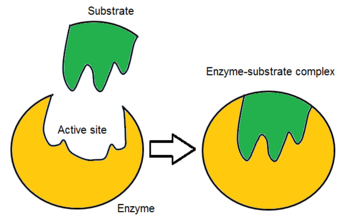
What has been proposed is that somehow each molecule
sends out a unique electromagnetic field that can "sense" the
field of the complimentary molecule. It's as if there
is a "dance" in the cellular medium and the
molecules move to the rythm. The music is supplied by
the biophoton.
" Veljkovic and Cosic proposed that molecular
interactions are electrical in nature, and they take
place over distances that are large compared with the
size of molecules. Cosic later introduced the idea of
dynamic electromagnetic field interactions, that molecules
recognize their particular targets and vice versa by
electromagnetic resonance. In other words, the molecules
send out specific frequencies of electromagnetic waves
which not only enable them to 'see' and 'hear' each other,
as both photon and phonon modes exist for electromagnetic
waves, but also to influence each other at a distance
and become drawn to each other if vibrating out of phase
(in a complementary way)." -- The Real Bioinformatics
Revolution: Proteins and Nucleic Acids Singing to One
Another? (Paper available at report@i-sis.org.uk)

"There are about 100,000 chemical reactions happening
in every cell each second. The chemical reaction can
only happen if the molecule which is reacting is excited
by a photon... Once the photon has excited a reaction
it returns to the field and is available for more reactions...
We are swimming in an ocean of light."
These 'biophoton emission', as Popp called them, provided an ideal communication
system for the transfer of information to many cells across the organism.
But the single most important question remained: where was the light
coming from?
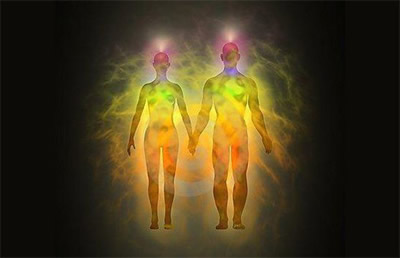
A particularly gifted student talked him into another
experiment. It is known that when ethidium bromide is
applied to samples of DNA, it insinuates itself in between
the base pairs of the double helix, causing DNA to unwind.
The student suggested that, after applying the chemical,
they measure the light coming from the sample. Popp found
that the greater the concentration of ethidium, the more
the DNA unravelled, but also the stronger the intensity
of light. Conversely, the less he used, the less light
was emitted.
He also found that DNA
could send out a wide range of frequencies,
some of which seemed to be linked to certain functions.
If DNA stored this light, it would naturally emit
more light on being unzipped.
These and other studies proved to Popp that one of the
most essential sources of light and biophoton emissions
was DNA. DNA was like the master tuning fork of the body.
It would strike a particular frequency and certain molecules
would follow. It was also possible, he realised, that
he had stumbled upon the missing link in current DNA
theory that could account for perhaps the
greatest miracle of all in human biology -- how a single
cell can turn into a fully formed human being.
How cells "talk" to
eachother
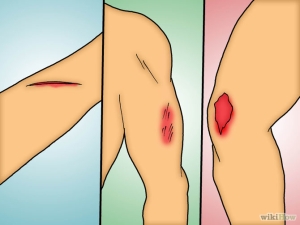
When you get a cut or scratch on your skin,
the cells that are injured somehow signal the surrounding
healthy cells to begin reproducing copies of themselves
to fill in and mend the opening. When the skin is back
to normal, a signal is sent to the cells to tell them
to stop reproducing. Scientists have wondered exactly
how this works.
With biophoton emissions, Popp believed
he had an answer to this question. This phenomenon of
coordination and communication could only occur in a
holistic system with one central orchestrator. Popp showed
in his experiments that these weak light emissions were
sufficient to orchestrate the body's repairs. The emissions
had to be low intensity because these communications
took place on a very small, intracellular, quantum level.
Higher intensities would have an effect only in the world
of the large and would create too much "noise" to
be effective.
In one series of studies, Popp had one
of his assistants -- a 27-year-old healthy young woman
-- sit in the room every day for nine months while he
took photon readings of a small area of her hand and
forehead. Popp then analysed the data and discovered,
to his surprise, that the light emissions followed certain
set patterns -- biological rhythms at 7, 14, 32, 80 and
270 days -- and similarities were also noted by day or
night, by week and by month, as though the body were
following the world's biorhythms as well as its own.
If you
are ill or facing adversity, you can begin to heal
yourself by
following the paths others have followed

Cancer is
a loss of coherent light
So far, Popp had studied only healthy individuals
and found an exquisite coherence at the quantum level.
But what kind of light is present in those who are ill?
Popp tried out his machine on a series
of cancer patients. In every instance, these patients
had lost those natural periodic rhythms as well as their
coherence. The lines of internal communication were scrambled.
They had lost their connection with the world. In
effect, their light was going out.
Just the opposite is seen with multiple
sclerosis: MS is a state of too much order. Patients
with this disease are taking in too much light, thereby
inhibiting their cells' ability to do their job. Too
much cooperative harmony prevented flexibility and individuality
-- like too many soldiers marching in step as they cross
a bridge, causing it to collapse. Perfect coherence is
an optimal state between chaos and order. With too much
cooperation, it is as though individual members of the
orchestra are no longer able to improvise. In effect,
MS patients are drowning in light.
Popp also examined the effects of stress.
In a stressed state, the rate of biophoton emissions
goes up -- a defence mechanism designed to restore the
patient's equilibrium.
Popp now recognized that what he'd been
experimenting with was even more than a c---- for cancer
or Gestaltbildung. Here was a model which provided a
better explanation than the current neo-Darwinist theory
for how all living things evolve on the planet. Rather
than a system of fortunate but ultimately random error,
if DNA uses frequencies of every variety as an information
tool, this suggests instead a feedback system of perfect
communication through waves that encode and transfer
information.
The Source Field Investigations
by David Wilcock and The Field by Lynne McTaggart
draw on research from Dr. Fritz-Albert Popp to
illustrate how "cancer, rather than being
some mysterious and awful problem, can now be
traced back to a loss of coherence in the light
we store in our bodies — as
all carcinogens end up scrambling light at a
380-nanometer frequency" (p182,
The Source Field Investigations). |
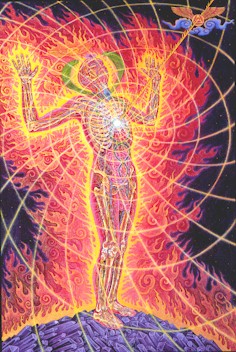
"Good
vibes" means coherent light
Popp came to realize that light in the body might even
hold the key to health and illness. In one experiment,
he compared the light from free-range hens' eggs with
that from penned-in, caged hens. The photons in the former
were far more coherent than those in the latter.
Popp went on to use biophoton emissions as a tool for
measuring the quality of food. The healthiest food had
the lowest and most coherent intensity of light. Any
disturbance in the system increased the production of
photons. Health was a state of perfect subatomic communication,
and ill health was a state of communication breakdown. We
are ill when our waves are out of synch.
Bio Photon emission detection is currently used commercially
in the food industry. Agricultural science is looking
at Bio-photon emissions to determine plant health for
the purposes of food quality control. Biophotonen is
a company working for development and practical applications
of biophotonics. The work is based on a variety of patents. "Biophotonen" solves
practical problems of food industry, environmental industry,
cosmetics, etc.
Biophoton Therapy
Biophoton therapy is the application of light to particular
areas of the skin for healing purposes. The light, or
photons, that are emitted by these units are absorbed
by the skin's photoreceptors and then travel through
the body's nervous system to the brain, where they help
regulate what is referred to as our human bio-energy.
By stimulating certain areas of the body with specific
quantities of light, biophoton therapy can help reduce
pain as well as aid in various healing processes throughout
the body.
The theory behind biophoton therapy is based on the
work of Dr. Franz Morell and has been expanded by the
work of Doctors L.C. Vincent and F.A. Popp, who theorized
that light can affect the electromagnetic oscillation,
or waves of the body and regulate enzyme activity.
It took some 25 years for Popp to gather converts from among the scientific
community. Slowly, a few select scientists around the globe began to
consider that the body's communication system might be a complex network
of resonance and frequency. Eventually, they would form the International
Institute of Biophysics, composed of 15 groups of scientists from international
centres around the world.
Popp and his new colleagues went on to study the light
emissions from several organisms of the same species,
first in an experiment with a type of water flea of the
genus Daphnia. What they found was nothing short of astonishing.
Tests with a photomultiplier showed that the water fleas
were sucking up the light emitted from each other. Popp
tried the same experiment on small fish and got the same
result. According to his photomultiplier, sunflowers
were like biological vacuum cleaners, moving in the direction
of the most solar photons to hoover them up. Even bacteria
swallowed photons from the media they were put in.
Communication between
organisms
For humans, there was another possibility. If we could
take in the photons of other living things, we might
also be able to use the information from them to correct
our own light if it went awry.
[Extracted from The Field: The Quest for the Secret
Force of the Universe, by Lynne McTaggart]

Light in human consciousness
Energy is necessary for any life form to exist. When
this energy becomes disrupted, a number of bodily functions
can be affected. Through the use of biophoton light,
this energy can be rebalanced and strengthened, thus
alleviating and improving numerous health conditions.
Since body and mind are connected through this energy,
we are not only able to improve physical conditions,
but this therapy can also aid in achieving a greater
state of mental and emotional health.
1. Increases vascularity (circulation) by increasing
the formation of NEW Capillaries, which are additional
Blood Vessels that replace damaged ones. NEW Capillaries
SPEED-UP the Healing Process by carrying MORE Oxygen
as well as MORE Nutrients needed for Healing and they
can also carry MORE Waste Products away.
2. Stimulates the production of Collagen. Collagen is
the MOST common Protein found in the body. Collagen is
the ESSENTIAL Protein used to REPAIR damaged Tissue and
to replace old Tissue. It is the substance, that holds
Cells together and has a HIGH degree of elasticity. By
increasing Collagen Production, LESS Scar Tissue is formed
at the damaged site.
3. Stimulates the release of Adenosine Triphosphate
(ATP). ATP is the major carrier of Energy to ALL Cells.
Increases in ATP allow Cells to accept Nutrients FASTER
and get rid of Waste Products FASTER by increasing the
Energy Level in the Cell. ALL Food turns into ATP, before
it is utilized by the Cells. ATP provides the Chemical
Energy, that drives the Chemical Reaction of the Cell.
4. Increases Lymphatic System activity. Edema, which
is the swelling or natural Splinting Process of the Body,
has two basic components. The first is a liquid part,
which can be evacuated by the Blood System and the second
is comprised of the Proteins, which have to be evacuated
by the Lymphatic System.Research has shown that the Lymph
Vessel diameter and the flow of the Lymph System can
be DOUBLED with the use of Biophoton Light Therapy. The
venous diameter and the arterial diameters can also be
increased. This means that both parts of edema (liquid
and protein) can be evacuated at a MUCH FASTER rate to
relieve swelling.
5. Increases RNA and DNA synthesis. This helps damaged
Cells to be replaced MORE promptly.
6. Reduces the excitability of Nervous Tissue. The Biophotons
of Light Energy enter the Body as Negative Ions. This
calls upon the Body to send Positive Ions like Calcium
among others to go to the area being treated. These Ions
assist in firing the Nerves, thereby relieving Pain.
7. Stimulates Fibroblastic Activity, which aids in the
Repair Process. Fibroblasts are present in Connective
Tissue and are capable of forming Collagen Fibers.
8. Increases Phagocytosis, which is the process of scavenging
for and ingesting dead or degenerated Cells by Phagocyte
Cells for the purpose of clean-up. This is an IMPORTANT
part of the Infection Fighting Process. Destruction of
the Infection and clean-up must occur before the Healing
Process can take place.

9. Induces a thermal-like Effect in the Tissue, the
Biophoton Light raises the Temperature of the Cells,
although there is NO heat produced from the Tubes themselves.
10. Stimulates Tissue Granulation and Connective Tissue
Projections, which are part of the Healing Process of
Wounds, Ulcers or Inflamed Tissue.
11. Stimulates Acetylcholine release. Acetylcholine
causes Cardiac Inhibition, Vasodilation, Gastrointestinal
Peristalsis and other Parasympathetic Effects.
. "In absolute laymen's terms, as I understand
it, our DNA needs light in order to operate properly.
It absorbs light and puts it to use to make our body
work. When we're stressed we give off some of this
light and eventually need it to be replenished. When
carcinogens — like benzo[a]pyrene — get
in our system, they absorb light at one frequency and
spit it out into our system as another. This
becomes a big problem when it's the 380nm frequency
because when this frequency gets scrambled, our bodies
can't perform photorepair. As a result, we ultimately
follow the fate of the patients with xermoderma pigmentosum
(above)."
Latest
Biophoton 380nm 30 LED Body Pad
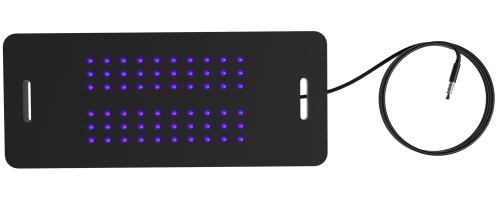
Product apperance may vary slightly as this is being
upgraded monthly at this time
|
Picture this Use your Rife
frequecy Resonator or you BTPro to pulse your 380nm
biophoton mask / Pad at 10hz
In 2003 NASA-Goodwin found
10 Hz square wave stimulation caused
neural tissue regeneration @ 4x baseline, w/ better
3-D orientation; cell DNA signature turned - OFF -
120+ sets of maturation genes and turned - ON - 120+
sets of developmental genes. Over 100 sets of nucleic
DNA reverted from maturation to developmental. NASA
didn't dig deep enough to explain why cell
regeneration QUADRUPLED under 10 Hz pulsed electromagnetic
field (PEMF) or why the genetic effects
occurred ONLY at 10 Hz pulsed electromagnetic field
(PEMF). However more ATP explains very well based upon
the work of David Hood and the efficient demonstration
by James Tong
 |
Latest Biophoton
380nm 30 LED Body Pad for
Rife Pro options 1-7
|
| |
|
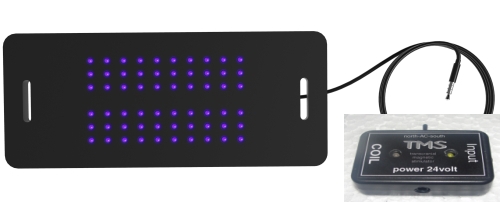 |
Latest
Biophoton 380nm 30 LED Body Pad
with Driver for BTPro/BTPlus
|
| |
|
|
BTPRO
plus Biophoton 380nm 30 LED
Body Pad and Driver
Biophoton
NEW 380nm 30 LED
Body Pad
More information on the BTPro
. |
| |
|
| |
Bio photon
/Pad
Pulse your Biophoton
pads at 10 hz or multiple frequencies
|
 |
Rife Pro
Rife/Crane Mark 9
WAVEFORM FREQUENCY
RESONATOR
Rife discovered that every virus,
bacterium, parasite and other pathogen is particularly
sensitive to a specific "frequency" of
sound and can be destroyed by intensifying that
frequency until it literally explodes - like an
intense musical note that can shatter a wine glass!
To "disintegrate" the microbes, Rife
invented a Beam Ray machine (now known as a Rife
machine)
|
| |
"It’s important
for us to know that biophoton signals are blocked
when we’re under the kind of subliminal stress
caused by electropollution. The
bottom line is that electropollution is continually
Disturbing—whether you know it or not—your
sympathetic nervous system, which elevates your
fight-and-flight response that in turn raises cortisol,
your stress hormone. Fluctuations in cortisol lead
to numerous health disorders ranging from belly
fat and thinning skin to even more serious health
problems like erratic sleep patterns, accelerated
aging, reduced immunity, cardiovascular disease,
blood sugar ups and downs, autoimmune disease,
and mood disturbances. For most all of us today,
unnatural exposure to artificial frequencies is
constant, and often unavoidable, due to the rapidly
escalating wireless nature of our society within
the past decade." |
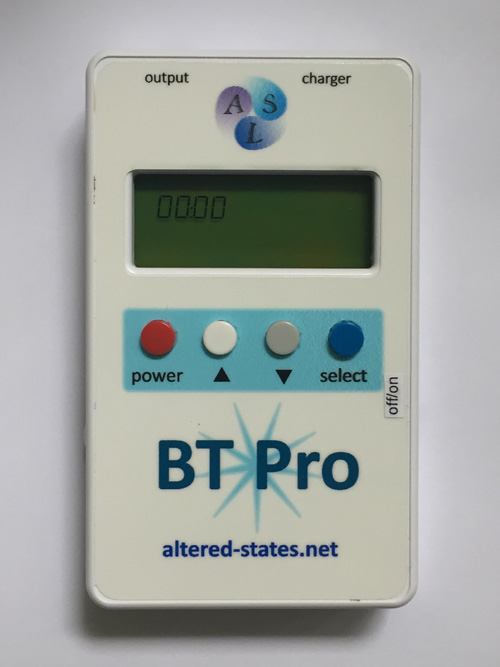 |
BTPro
The most advanced, versatile Body/Mind enhancement
tool
It's not just a very powerful CES
(Cranial electro stimulation) system we have taken
the
12 most popular systems from our web site and put them into one
unit
Everything in the Palm of your Hand
|
| |
|
Properties
Of Biophotons
The word “biophotons” is used to denot a permanent spontaneous
photon emission from all living systems. It displays a few up to some
hundred…
Coherence
Of Biophotons
Biophoton emission is a general phenomenon of living systems. It concerns
low luminescence from a few up to some hundred photons-per-second…
Bio
Photon Research
A surprising, but according to our previous results not completely unexpected
new discovery is a recent observation that biophoton
http://photonichuman.weebly.com/ |

